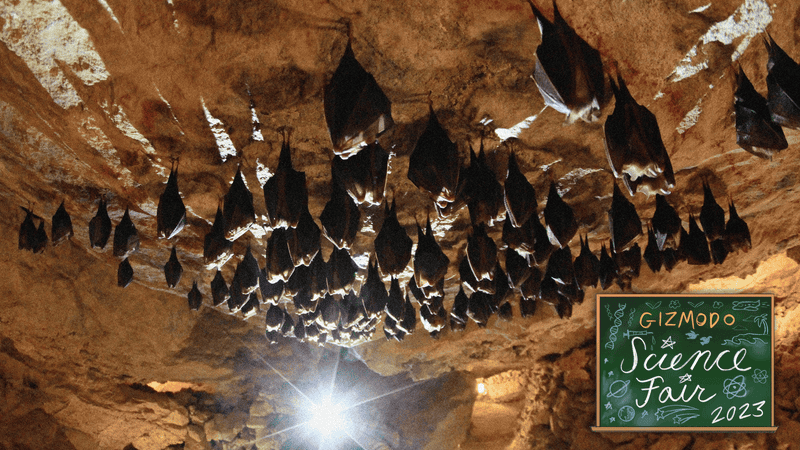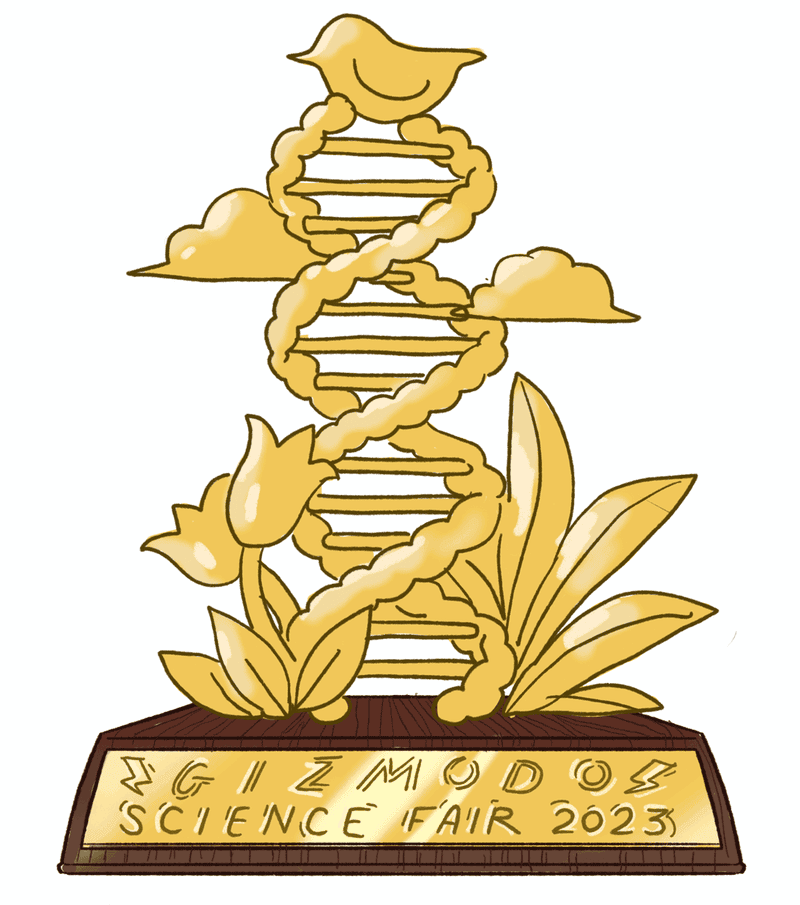How Airborne DNA Could Revolutionize Conservation

Elizabeth Clare’s airborne eDNA project is a winner of the 2023 Gizmodo Science Fair for demonstrating a way to use airborne DNA to reveal which species are present in an environment.
The Question
Can you identify nearby animals just by collecting their DNA from the air?
Read more
These Winning Close-Up Photos Show Life That's Often Overlooked
Remembering Enterprise: The Test Shuttle That Never Flew to Space
The Results
The team sampled air from the tunnels of a naked mole rat habitat in a lab and found DNA from the rats (and, no surprise, they also found human DNA). A bigger test of the technique happened at an open-air zoo in the UK. The team was able to identify numerous zoo animals just from the microscopic genetic material contained in the air samples.
Why They Did It
“This is still in the realm of forensic conservation ecology. We are dealing with the tiniest amounts of DNA I’ve ever handled in my lab, which also means the highest risk of contamination and just absolutely losing the signal to yourself,” said project lead Elizabeth Clare, a molecular ecologist at York University in Canada. “I’ve never worried so much about literally breathing near my workstation.”
“One thing that is really exciting about airborne DNA is that it gives us a high throughput and potentially automated way to monitor terrestrial ecosystems, which we’ve never had before,” said Joanne Littlefair, biologist at Queen Mary University in the UK. “In lots of places in the world, we are really struggling with biological monitoring, either because of the sheer scale of the problem or because some species are rare or very elusive or nocturnal and difficult to see. And when we look at airborne DNA, it is an efficient way to monitor many different groups of taxa in biology. That has all kinds of exciting implications for conservation.”

Why Airborne DNA Is Winner
Airborne eDNA (shorthand for environmental DNA) could overhaul the way scientists understand environments and the organisms that move through them. Other types of environmental DNA collection already exist; researchers can collect water samples in marine environments and soil samples in terrestrial environments. The air-sampling technology is nascent, but it’s an inventive way to advance environmental DNA research. Other research teams are also conducting airborne eDNA work, showing that the approach is reproducible. If its methods are perfected, biologists will be able to monitor populations of multiple species in an area without directly observing them, learning how those populations fluctuate with breeding seasons, extreme weather, and other factors.
What’s Next
Researchers—Clare’s team and others—will continue to test the applications and limits of airborne eDNA collection and sampling in different environments. More work needs to be done to understand how much information can be gleaned from air samples; for example, whether amounts of DNA in the air correspond to a species’ biomass in the environment. The method also needs to be applied in a variety of locations, to understand if it will work as well in tropical or arid open-air environs as it does in bat roosts, naked mole rat tunnels, and zoos. If airborne DNA takes off, it could be used to prove the persistence of animals feared extinct or to reveal how invasive species are spreading.
The Team
Elizabeth Clare, York University; Katherine Adams, Hamerton Zoological Park; Frances Bennett, Queen Mary University of London; Andrew Briscoe, Nature Metrics; Rosie Drinkwater, Ludwig-Maximillian University Munich; Caitlin Dyer, Queen Mary University of London; Chloe Economou, Syngenta; Chris Faulkes, Queen Mary University of London; Brock Fenton, Western University; Charles Francis, Canadian Wildlife Service; Emma Froehlich, Northern Arizona University, Flagstaff; Nina Garrett, York University; James Gilbert, Queen Mary University of London; Natalia Ivanova, Nature Metrics North America; Joanne Littlefair, Queen Mary University of London; Alejandro Maeda-Obregon, University College London; Ben McRobie, Hamerton Zoological Park; Amanda Naaum, Nature Metrics North America; Daniel Sanchez, Northern Arizona University, Flagstaff; Nancy Simmons, American Museum of Natural History; Faith Walker, Northern Arizona University, Flagstaff; and Jonathan Watkins, Queensland University of Technology.
See the full list of Gizmodo Science Fair winners
More from Gizmodo
Sign up for Gizmodo's Newsletter. For the latest news, Facebook, Twitter and Instagram.

